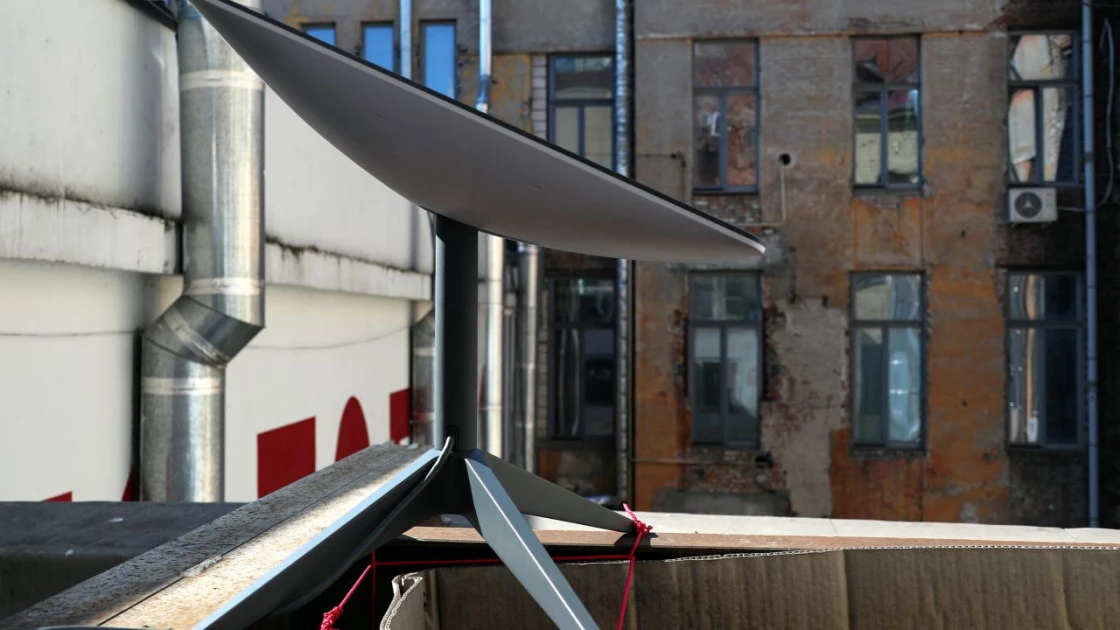Starlink: What to know about Elon Musk’s satellite internet service that’s coming to Kenya

SpaceX Starlink internet terminal installed in Odesa, southern Ukraine, March 15, 2022. | PHOTO: CNN
The internet provider, which is operated by Musk’s spacecraft corporation SpaceX, was launched in Nigeria on Tuesday; seven months after Musk announced the company had received approval to launch in the West African country.
Mozambique is also one of the countries the ISP has a green light to operate, while for Kenya, it says it is just a matter of getting regulatory approval.
Last month, the company said it will launch in Kenya in the second quarter of 2023, to take on existing players such as Safaricom, Telkom, Faiba and Zuku, who use fibre-optic technology.
How does it work?
Starlink is an internet broadband system which began launching satellites in 2019. The service, which is already available in 44 countries globally, targets customers who struggle to access the internet through traditional landlines.
The company has launched more than 3000 satellites into low-Earth orbit, which have the capacity to provide high-speed internet services.
On its website, Starlink says it is capable of delivering speeds of over 150Mbps to any place on the planet, as long as its satellite dish has a clear view of the sky.
In contrast, some local providers like Safaricom started rolling out 5G last year with a promise of delivering speeds of up to 100Mbps, the coverage is still scarce and few people have 5G routers.
Starlink’s kit comes in three trim levels; Standard for “residential users and everyday internet applications” like streaming, video calls and online gaming; High Performance for “power user, business, and enterprise applications”. This kit allows better speeds at high temperatures, can connect to more satellites, and is more resilient to extreme environments.
The most sophisticated of them all, the Flat High-Performance kit, targets “mobility applications and challenging environments”.
Starlink says this option has a wide field of view and enhanced GPS capabilities, it can connect to more satellites to allow for consistent connectivity while on the go, and the hardware is designed for a permanent installation and is more resilient to extreme environments.
The kit comes with the Starlink dish, mounting tripod, Wi-Fi router, router mount, power supply, power supply mount, and cables.
“Mounts designed to permanently install on a pole to avoid obstructions will be available for purchase on the Starlink Shop once your Starlink is ready to ship. Extended cable lengths, mesh nodes, and ethernet adapters are also available,” the company says.
So far, several Nigerians who pre-ordered the kits have reportedly been receiving them.
How much is it?
To get Starlink, you will need to cough up Ksh.74,216 ($599). Already, Kenyans can pre-order and deposit a fully refundable deposit of Ksh.12,260 ($99) to reserve a kit as the firm awaits regulatory approval.
“Order now to reserve your Starlink. Starlink is targeting service in your area starting Q2 2023. Availability is subject to regulatory approval. Within each coverage area, orders are fulfilled on a first-come, first-served basis,” the company said last month.
The monthly cost has been $110 for customers in the United States, which is about Ksh.14,000.
In comparison, the Safaricom 5G Wi-Fi router costs Ksh.25,000 and a further Ksh.5,000 for set-up. Premiums range from Ksh. 3,499 for 10Mbps to Ksh.5,999 for 40Mbps, while a 100Mbps subscription sets one back Ksh.14,999.
Faiba offers 125Mps for Ksh.21,000.
Where will it be available?
Starlink is set to begin rolling out in various cities Nairobi, Kisumu, Mombasa, and Nakuru, by June 2023.
The service offers a 30-day trial period where if not satisfied, a customer can return the hardware for a full refund.
Want to send us a story? SMS to 25170 or WhatsApp 0743570000 or Submit on Citizen Digital or email wananchi@royalmedia.co.ke
Comments
No comments yet.



Leave a Comment